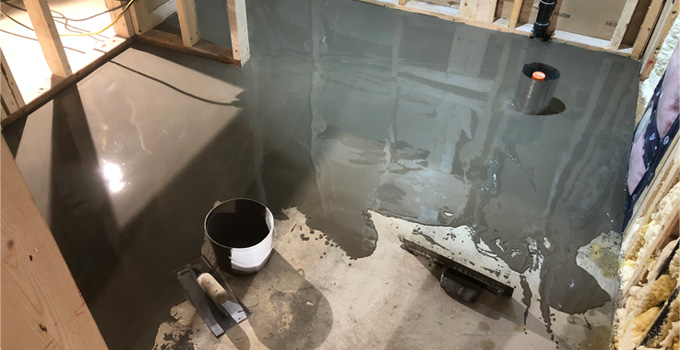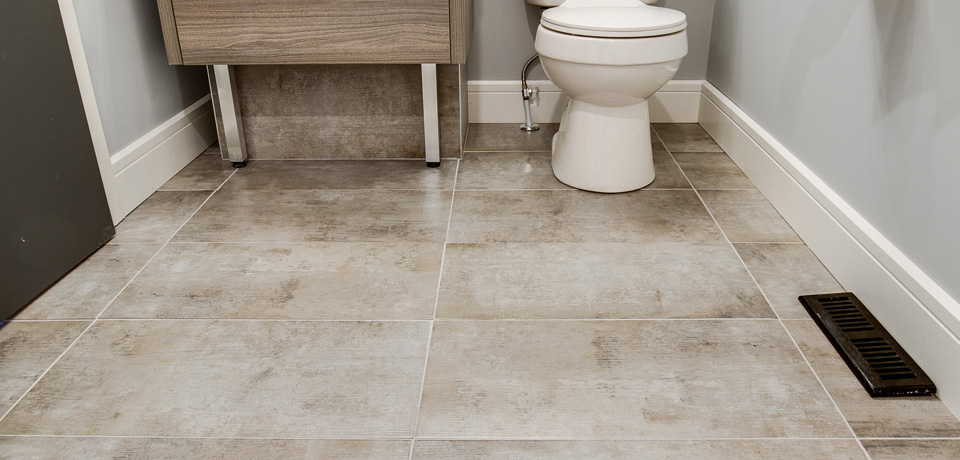Any successful floor tiling project starts with a solid design and proper preparation of the subfloor.
Typically, one of two substrates will be below your tile: concrete or a wood subfloor. Both of these substrates need to be prepped to ensure the best tiling installation possible.

When working with a concrete substrate, especially in an older home, the concrete will likely be uneven or unlevel, but can be fixed with a self-levelling mortar compound. Start by cleaning the existing concrete and painting on a concrete bonding agent to help the two concretes adhere together. Once cured, you can start tiling directly onto the new concrete base.
Wooden subfloors are very common for above ground spaces. A challenge wood subfloors present is that they move or flex as someone walks on the floor. This isn't an issue for carpet or linoleum flooring, but with a tile floor there can't be any bounce, movement or deflection.

To eliminate movement, you need at minimum 1-1/8 inches of subfloor, which is achieved by layering plywood. You can also use cement board under your tile instead of layering plywood, which adds a waterproofing element to your substrate.
When laying subfloor it is essential that you stagger your joints from one layer to the next. The first layer needs to be screwed down to the joists. The top layer needs to be screwed down every six inches.

Proper preparation can make all the difference in your tiling project. To find out how the installation process works once these steps have been completed, see Floor tiling from mortar to grout

